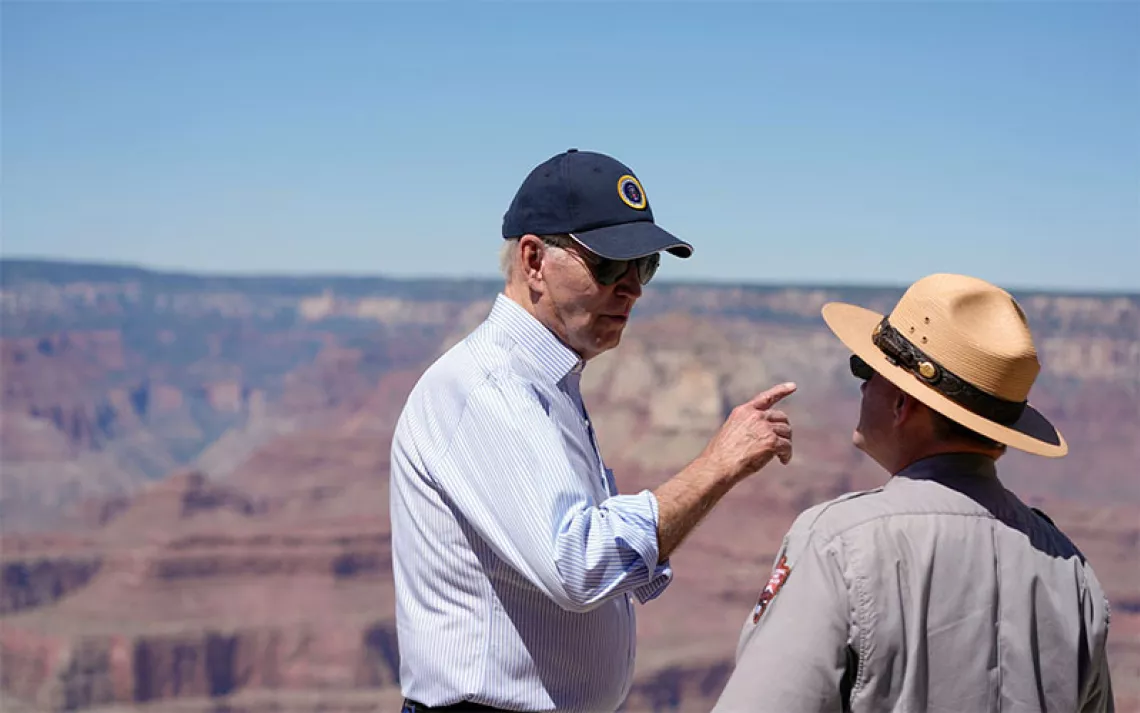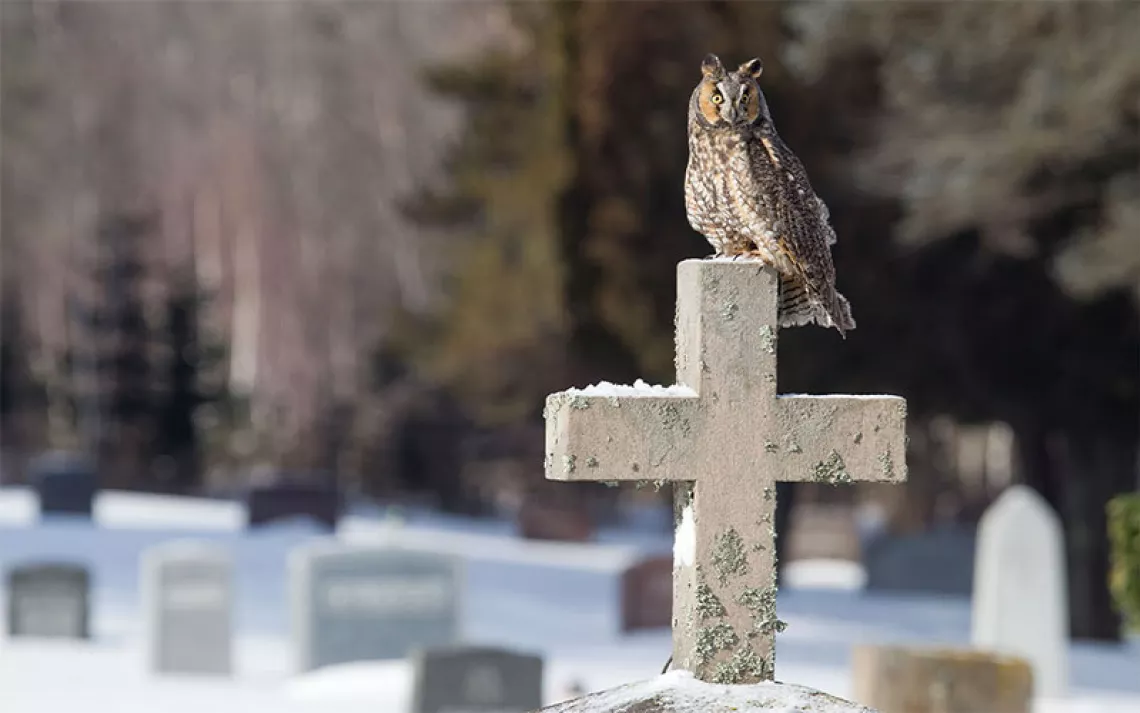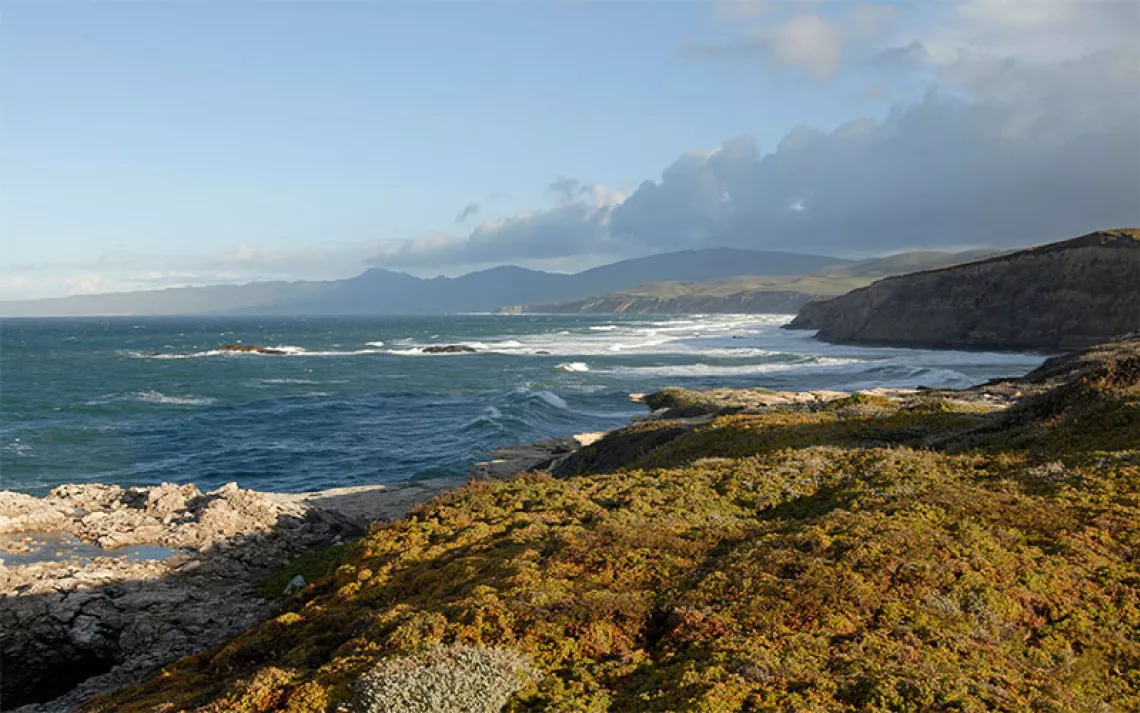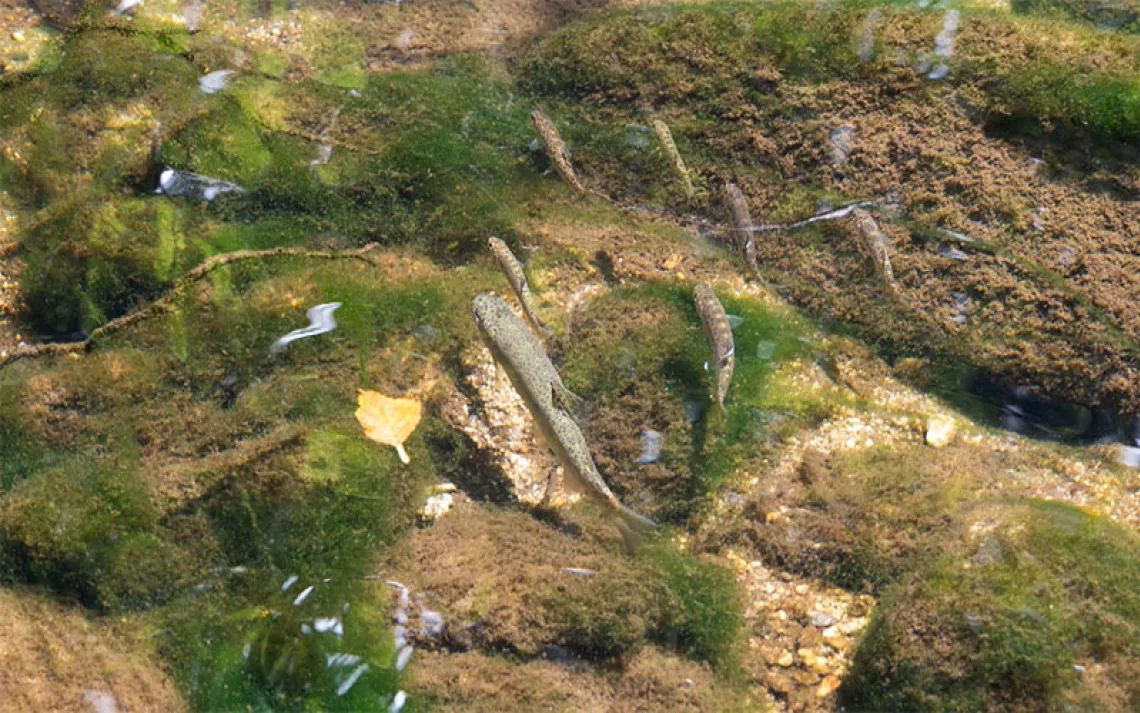From Turtle Soup to Turtle Conservation
Mexican fishermen use their expertise to save the endangered hawksbill sea turtle
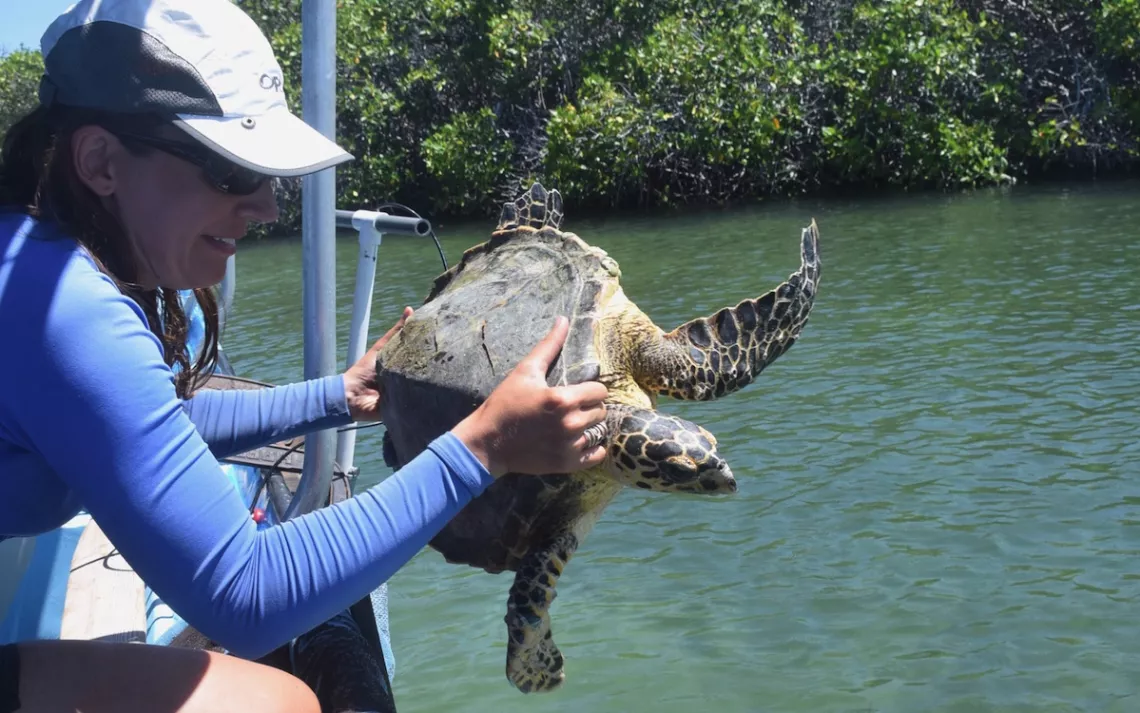
Photos courtesy of Lily Dayton
Felipe Cuevas guides his fishing boat, or panga, through a mangrove-lined channel in the Gulf of California. His brother, Juan Cuevas, stands at the bow, scanning the estuary's jade-green water. The water is so clear that you can see rays skitter on the shallow bottom. Lourdes Martínez, a biologist known to the fishermen as “Luli,” sits in the stern, glancing over a data sheet.
“Mira!” Juan calls, pointing to a dark shadow that darts in front of the panga. Everyone bolts into action. Juan throws overboard a pink weighted net, feeding lengths of it into the water while Felipe steers the boat in a slow, wide arc around the shadowy figure, encircling it as in a lasso. Juan gathers the net back toward the boat until the figure comes into view—the unmistakable gold and brown carapace of a hawksbill sea turtle.
The fishermen deftly untangle the turtle from the net, then Martínez heaves the animal into the hull. There she will keep the turtle cool until they return to the research camp, where she'll weigh the turtle, measure it, mark its flipper with an identification tag, and mount a small satellite transmitter to its shell.
This turtle is just one of many that Martínez, a PhD student at the University of California, Santa Cruz, is tracking as part of her doctoral research. To learn more about the movement and habitat preferences of hawksbills in the Gulf of California, Martínez (originally from Mexico City) is working in collaboration with the Mexican non-profit organizations Sociedad de Historia Natural Niparajá A.C., Grupo Tortuguero de las Californias A.C., and WWF Mexico.
But the partners most integral to the field research are the fishermen themselves. “Their knowledge is super valuable to this project,” Martínez says. “They have been in this area since they were born, they learned from their parents and grandparents how to fish, and they know the area in terms of the animals that live here, but also in terms of the weather and how the ocean behaves.”

Without the fishermen, the turtle project wouldn’t even exist, says Don Croll, Martínez’s PhD advisor and professor of ecology and evolutionary biology at the UCSC. “Juan and Felipe told us they saw hawksbills in the estuary, and all of us were surprised by how many turtles were in there.”
As recently as 2007, hawksbills were considered to be virtually extinct in the eastern Pacific. When scientists discovered and began tracking a few remnants of this critically endangered population, they discovered that--unlike other sea turtle populations--hawksbills off the coast of Central America spent much of their time foraging in mangrove estuaries.
This was nothing new to the Cuevas brothers. Raised in a fishing family on Isla El Pardito, a tiny island in the Gulf of California north of La Paz, they had always found hawksbills in the mangrove estuary near their island home. Coincidentally, just before they started working with Martínez, the brothers had contacted Niparajá, a local conservation organization, to ask for help in protecting the estuary. “Every year there are more and more boats coming into our zone, and these boats are a big problem because they kill everything,” Juan Cuevas says in Spanish. “So that is why we decided to create a refuge.”
Niparajá helped them apply to CONAPESCA, Mexico’s fishery agency, to establish the estuary as one of 11 refuges within the country’s first network of Zonas de Refugio, each of which are managed by the fishermen themselves. The estuary was the obvious choice, says Cuevas, because it serves as a nursery or feeding ground for many fish species, and it’s close enough to their island that they can easily monitor it for illegal fishing activity.
“The fishermen feel empowered because these refugia are something that they created,” says Amy Hudson Weaver, sustainable fisheries program coordinator of Niparajá. “The intention of the refugia wasn’t to protect hawksbills. But it's been a huge positive side effect.”
Like residents of other coastal communities in the Gulf, the people of El Pardito have strong cultural ties to sea turtles. Cuevas remembers his mother cooking caguama—the green sea turtle—to make soup. “My family hunted for sea turtles all my life,” he says. “It was a family custom.”
As the commercial trade for sea turtles increased during the 20th century, turtle populations began to decline precipitously. This was largely due to the demand for sea turtle skin as a replacement for crocodile skin, which was in short supply due to dwindling crocodile numbers. Hawksbills in particular were exploited in the tortoiseshell trade for their striking shells. In 1990, the Mexican government banned fishing for all seven species.
Now the Cuevas brothers use their traditional knowledge toward conservation efforts to supplement their fishing work. Starting in 2005, they began monitoring sea turtles for Grupo Tortuguero, a local organization that works with fishing communities.
“Fishermen are key to sea turtle conservation,” Karen Oceguera, executive director of Grupo Tortuguero, says in Spanish. “They are the ones who have direct contact with marine species, and they are the ones changing their fishing methods so they don’t harm turtles.”
A side benefit for fishermen working on sea turtle conservation projects, says Weaver, is that it allows them to maintain a connection to the animals that have been part of their cultural heritage. “There are certain things that are really rooted in your identity as fishermen, and one of those is turtle fishing,” she explains. “Watching this one community taking on turtle monitoring, and then taking it to a whole other level [with scientific research projects]--it's really cool seeing them keep their relationship with that species.”
Lately, the Cuevas brothers have been working more in research and conservation than with fishing. Besides working with sea turtles in the open ocean, they have also helped with manta ray research and shark monitoring, and will soon begin working with sea turtles on nesting beaches. In the fall, they'll travel throughout the Gulf with Martínez, searching for hawksbills in other mangrove estuaries. If they find them, Martínez hopes that nearby fishing communities can also create fisheries refugia as part of a hawksbill conservation strategy.
At the research camp on Isla El Pardito, the Cuevas brothers help Martínez weigh the turtle they'd caught, which they’ve determined is a female. After affixing a satellite transmitter to her carapace, Felipe drives the panga slowly through the mangroves while Juan stands watch. Both follow their fisherman instincts, constantly scanning the water for signs of life. When they get to the channel where they originally caught the hawksbill, Juan Cuevas lifts her gently, places her in the water, and sets her free.
 The Magazine of The Sierra Club
The Magazine of The Sierra Club
